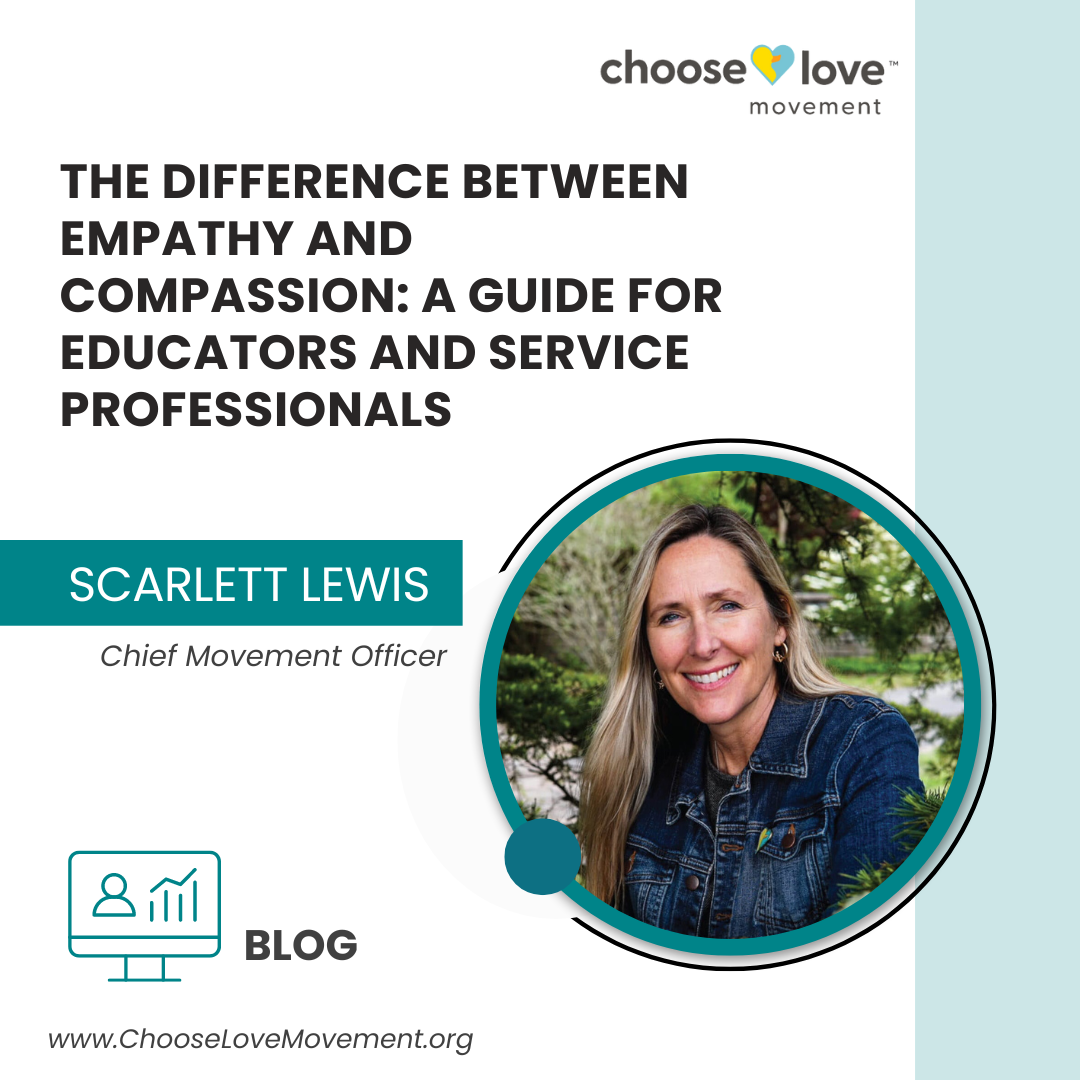By Scarlett Lewis, Chief Movement Officer
It’s important to Understand the difference between Empathy and Compassion. These two descriptive states are often used interchangeably, but they are distinct emotional responses that impact our mental and physical well-being differently. Empathy allows us to connect deeply with others by feeling their pain, while compassion involves a desire to alleviate that pain without fully taking it on ourselves.
Research in neuroscience reveals profound differences between empathy and compassion:
Empathy activates the brain’s pain centers, the same regions involved in the experience of physical pain. This mirroring effect can lead to emotional fatigue, often referred to as ’empathy burnout’.
Compassion, on the other hand, engages the brain’s reward circuitry. This process releases feel-good chemicals, which can lead to feelings of joy and contentment, rather than burnout.
It’s important to know when to use one or the other.
Empathy is essential for establishing initial connections and understanding the feelings of others. Examples include:
Validated Connection: Listening intently to a student’s struggles to show you understand their challenges.
Building Trust: Demonstrating you recognize the pain and difficulty of a colleague’s situation to foster a trusting relationship.
To avoid empathy fatigue and harness the energizing power of compassion, one can transition as follows:
1. Self-Awareness: Recognize when you’re experiencing empathy fatigue. Signs might include emotional exhaustion, irritability, or a sense of being overwhelmed.
2. Intentional Practice: Engage in mindfulness or meditation practices aimed at fostering compassion. Techniques like loving-kindness meditation can help switch the focus from experiencing others’ pain to wishing them well.
3. Boundaries and Self-Care: Establish personal boundaries to prevent overexposure to distressing situations. Incorporate regular self-care practices to maintain emotional resilience.
4. Compassionate Actions: Transform empathetic feelings into constructive actions. Instead of merely feeling another’s pain, think about what you can do to help ameliorate it. Research supports that all the ‘nurturing healing love’ we give, comes back to us in the form of help and healing for ourselves.
For educators and public service professionals, adopting a compassion-centered approach can lead to more sustainable and fulfilling careers:
1. Training and Workshops: Participate in professional development programs focused on choosing love and compassion training and resilience building.
2. Peer Support: Develop support networks where colleagues can share experiences and strategies for maintaining a compassionate approach.
3. Feedback and Reflection: Regularly seek feedback and take time to reflect on your practices to ensure you are fostering a positive impact without suffering from burnout.
In conclusion, distinguishing between empathy and compassion is crucial for professionals in high-stress environments. While empathy is necessary for initial connection and understanding, compassion provides a sustainable path for ongoing support and care. By practicing compassion, educators and service providers can protect their own well-being while delivering effective and heartfelt support to those in their care.

